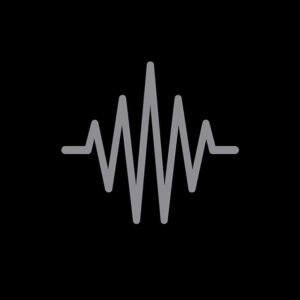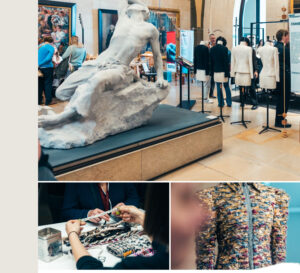Bruce Lee, a figure synonymous with martial arts cinema, revolutionized the way combat was portrayed on the silver screen. His weapons of choice were often extensions of his philosophy, physical prowess, and innovation in the martial arts world. Among the many tools that Bruce Lee wielded with mastery, the nunchaku stands out as one of the most iconic. This is especially true in the context of “Enter the Dragon”, the 1973 film that not only cemented Bruce Lee’s status as a martial arts legend but also introduced a global audience to the stunning art of using nunchaku. In this critical examination, we will explore the significance of Bruce Lee’s nunchaku in “Enter the Dragon”, its historical and cultural relevance, Lee’s mastery of the weapon, and how this instrument of combat became a symbol of his enduring legacy.
The Nunchaku: A Brief History and Cultural Context
The nunchaku, consisting of two wooden sticks connected by a chain or rope, was traditionally an agricultural tool believed to have originated in Okinawa, Japan. Farmers would use it for tasks such as threshing grain, but over time, it evolved into a weapon, particularly when Okinawans were prohibited from carrying traditional weapons under the rule of the Japanese samurai class. In this context, everyday tools were repurposed for self-defense, giving rise to the nunchaku’s use in combat.
By the time Bruce Lee popularized the weapon, the nunchaku had long been a staple of traditional martial arts, especially in forms like Okinawan kobudō and karate. However, it was relatively unknown to the wider public, particularly in the West. Lee’s mastery and demonstration of the nunchaku in “Enter the Dragon” not only gave the weapon unprecedented visibility but also showcased its practicality and aesthetic appeal as a martial arts tool.
The Nunchaku in “Enter the Dragon”: A Weapon of Precision and Power
In “Enter the Dragon”, Bruce Lee’s use of the nunchaku is perhaps one of the most memorable and electrifying moments in martial arts cinema. The film’s choreography, cinematography, and Lee’s unerring control of the weapon combine to create a sequence that has become iconic in both the history of cinema and martial arts culture.
The nunchaku sequence occurs when Lee’s character, operating undercover in a martial arts tournament, is cornered by multiple guards in an underground compound. With quick, fluid motions, Lee retrieves the nunchaku and seamlessly integrates it into his fighting strategy. What stands out in this scene is not merely Lee’s technical proficiency, but the way in which he expresses a deep sense of control over the weapon. Every movement, swing, and strike is perfectly timed, suggesting that the nunchaku is more than just a weapon—it is an extension of Lee’s own body.
In this scene, the nunchaku serves as both a tool for offense and defense, its rapid strikes allowing Lee to keep his opponents at a distance while simultaneously disabling them with precision. The sound of the nunchaku cutting through the air, combined with Lee’s signature facial expressions and body language, gives the sequence an almost hypnotic quality. The rhythm of the weapon’s motion creates a sense of inevitability, where each strike seems destined to land with devastating effect.
Moreover, the nunchaku highlights one of Lee’s core martial arts philosophies: efficiency of movement. Lee was known for his belief in minimizing unnecessary motion in combat, a principle that is beautifully illustrated in this scene. The nunchaku, in Lee’s hands, is wielded with an economy of movement that maximizes both speed and power. There is no wasted effort, only a continuous flow of strikes and parries, all executed with perfect timing and precision.
Bruce Lee’s Mastery of the Nunchaku
Bruce Lee’s use of the nunchaku was not limited to “Enter the Dragon”—he had been training with and refining his nunchaku technique for years prior. Under the mentorship of his close friend and student, Dan Inosanto, who introduced Lee to the weapon, Bruce Lee quickly became proficient in its use, integrating it into his broader martial arts philosophy of Jeet Kune Do. Jeet Kune Do, which emphasizes adaptability, fluidity, and directness, is reflected in Lee’s handling of the nunchaku. He did not approach the weapon as a rigid tool but as an instrument that could be adapted to suit his needs in combat.
One of the most important aspects of Lee’s mastery of the nunchaku is his ability to use the weapon in creative and innovative ways. Where traditional martial artists might follow set forms and patterns when using the nunchaku, Lee’s style was far more dynamic. He incorporated spins, transitions between hands, and techniques that combined the nunchaku with kicks and punches, making his style both unpredictable and highly effective.
Lee’s commitment to mastering the nunchaku extended beyond the physical; he was also deeply interested in the mental and philosophical aspects of weapon training. For Lee, the nunchaku was not just a weapon to be wielded but a tool for developing discipline, focus, and self-control. His approach to the weapon was consistent with his broader martial arts philosophy, which emphasized the importance of training the mind alongside the body.
In “Enter the Dragon”, this mastery is on full display. Lee’s movements with the nunchaku are so fluid that they appear almost effortless, despite the weapon’s inherent difficulty. The nunchaku is notorious for being difficult to control, particularly for beginners, as its chain or rope creates an additional level of unpredictability. However, in Lee’s hands, the weapon becomes a precise, controlled tool, one that he wields with supreme confidence and skill.
The Symbolism of the Nunchaku: A Tool of Rebellion
Bruce Lee’s nunchaku in “Enter the Dragon” has become an enduring symbol of martial arts mastery, but it is also imbued with deeper meaning. In many ways, the nunchaku represents Lee’s own personal rebellion against the traditional structures of martial arts and the film industry.
In the world of martial arts, Lee was known for challenging the rigid hierarchies and traditions that dominated the practice. He sought to break free from the confines of traditional forms, creating his own martial arts philosophy that was fluid and adaptable. The nunchaku, with its unconventional form and function, mirrors this spirit of rebellion. It is a weapon that, much like Lee himself, defies expectations and limitations. The nunchaku, in Lee’s hands, becomes a symbol of the freedom to create one’s own path in martial arts.
Furthermore, the use of the nunchaku in “Enter the Dragon” can be seen as a metaphor for Lee’s struggle against the limitations imposed upon him by the Hollywood film industry. As a Chinese-American actor, Lee faced significant discrimination and typecasting, often being relegated to minor roles or stereotypical portrayals of Asian characters. “Enter the Dragon” was Lee’s breakout role, the first Hollywood film to cast him in a leading role. His use of the nunchaku in the film can be seen as a powerful statement of his determination to break free from the constraints of the industry and assert his own identity as a leading man and martial artist.
The fact that the nunchaku became so closely associated with Lee after “Enter the Dragon” speaks to the weapon’s symbolic power. It was not just a tool for combat but a reflection of Lee’s own struggles, triumphs, and personal philosophy. In the years following the film’s release, the nunchaku became an iconic part of Lee’s image, solidifying its place in the cultural imagination.
Impression
The impact of Bruce Lee’s nunchaku sequence in “Enter the Dragon” cannot be overstated. It popularized the weapon on a global scale, inspiring countless martial artists, actors, and filmmakers to explore the use of nunchaku in their own work. The image of Bruce Lee twirling the nunchaku has become one of the most enduring images in martial arts cinema, a testament to the weapon’s cultural significance.
In the years following the release of “Enter the Dragon”, the nunchaku became a staple in martial arts films, with many actors and stunt performers attempting to replicate Lee’s iconic moves. The weapon’s popularity even extended beyond the realm of film, as it became a common tool in martial arts dojos and schools around the world.
However, the nunchaku’s association with Bruce Lee also had some unintended consequences. In the 1970s and 1980s, the weapon was banned in several countries, including the United Kingdom, due to concerns that its use in films like “Enter the Dragon” was inspiring young people to use it in real-life violence. This ban only served to enhance the weapon’s mystique, further cementing its status as a symbol of rebellion and power.
Despite these bans, the nunchaku’s cultural legacy has endured. It remains a popular weapon in martial arts training and demonstration, and its association with Bruce Lee continues to inspire new generations of martial artists. The nunchaku has also found its way into popular culture, appearing in video games, comic books, and other forms of media, often as a shorthand for martial arts mastery and rebellious spirit.
The Nunchaku as a Reflection of Bruce Lee’s Philosophy
In “Enter the Dragon”, Bruce Lee’s use of the nunchaku is more than just an impressive display of martial arts skill—it is a reflection of his personal philosophy, his mastery of movement, and his refusal to be constrained by tradition or expectation. The nunchaku, with its unpredictable nature and inherent difficulty, is the perfect symbol of Lee’s approach to martial arts and life: adaptable, innovative, and fiercely independent.
The nunchaku sequence in “Enter the Dragon” has become a defining moment in both Bruce Lee’s career and martial arts cinema. It represents the culmination of years of training, experimentation, and philosophical inquiry, all distilled into a single weapon. In Lee’s hands, the nunchaku becomes not just a tool for combat, but a symbol of freedom, power, and the limitless potential of human ability.
Today, more than 50 years after the release of “Enter the Dragon”, Bruce Lee’s nunchaku remains a powerful symbol of his legacy. It serves as a reminder of the lasting impact he had on martial arts, film, and popular culture, and it continues to inspire martial artists and fans around the world. Through his use of the nunchaku, Bruce Lee showed that martial arts is not just about physical prowess—it is about philosophy, discipline, and the pursuit of personal excellence.
No comments yet.







